Dominique Luchart's Blog, page 745
May 1, 2020
Space calendar 2020: Rocket launches, sky events, missions & more!, Hanneke Weitering,

LAST UPDATED May 1: These dates are subject to change, and will be updated throughout the year as firmer dates arise. Please DO NOT schedule travel based on a date you see here. Launch dates collected from NASA, ESA, Roscosmos, Spaceflight Now and others.
Watch NASA webcasts and other live launch coverage on our “Watch Live” page, and see our night sky webcasts here. Find out what’s up in the night sky this month with our visible planets guide and skywatching forecast.
Wondering what happened today in space history? Check out our “On This Day in Space” video show here!
May
May 4: Happy Star Wars Day! May the “fourth” be with you.
May 7: A SpaceX Falcon 9 rocket is expected to launch the seventh batch of approximately 60 satellites for the company’s Starlink broadband network in a mission designated Starlink 7. It will lift off from Space Launch Complex 40 at Cape Canaveral Air Force Station in Florida, at 7:30 a.m. EDT (1130 GMT). Watch it live.
May 7: The full moon of May, also known as the Flower Moon, occurs at 6:45 a.m. EDT (1045 GMT).
May 11: Northrop Grumman’s Cygnus NG-13 cargo resupply spacecraft will depart the International Space Station and burn up in Earth’s atmosphere. It will be released at 12:10 p.m. EDT (1610 GMT), and NASA TV will provide live coverage beginning at 11:45 a.m. EDT (1545 GMT). Watch it live.
May 12: See the moon, Jupiter and Saturn huddled together in the predawn sky. The waning, gibbous moon will be in conjunction with Jupiter at 5:41 a.m. EDT (0941 GMT), followed by a conjunction with Saturn at 2:11 p.m. EDT (1811 GMT).
May 14: The last-quarter moon will make a close approach to the Red Planet. It will be in conjunction with Mars at 10:02 p.m. EDT (0202 GMT on May 15). Look for the pair above the southeastern horizon before sunrise.
May 16: A United Launch Alliance Atlas V rocket will launch the AFSPC-7 mission for the U.S. Air Force. The mission’s primary payload is the X-37B space plane, also known as the Orbital Test Vehicle, will fly on the program’s sixth mission (OTV-6). It will lift off from Space Launch Complex-41 at Cape Canaveral Air Force Station in Florida.
May 18: Jupiter and Saturn will make a close approach in the early morning sky. The pair will be in conjunction at 12:45 a.m. EDT (0445 GMT).
May 20: A Japanese H-2B rocket will launch the HTV-9 cargo spacecraft to the International Space Station. It will lift off from the Tanegashima Space Center in Japan at 1:30 p.m. EDT (1730 GMT, or 2:30 a.m. local time).
May 22: New moon
May 23: The one-day-old moon will make a close approach to Venus in the evening sky. It will be in conjunction with Venus at 10:40 p.m. EDT (0240 GMT on May 24). Look for them above the southwestern horizon just after sunset.
May 27: Crew Dragon Demo-2. SpaceX’s Crew Dragon spacecraft is scheduled to take its first crewed test flight to the International Space Station with NASA astronauts Doug Hurley and Bob Behnken on board. It will lift off on a Falcon 9 rocket from NASA’s Kennedy Space Center in Florida, at 4:32 p.m. EDT (2032 GMT). Watch it live.
May 31-June 4: 236th Meeting of the American Astronomical Society
Also scheduled to launch in May (from Spaceflight Now ):
A Russian Soyuz rocket will launch approximately 36 satellites into orbit for the OneWeb constellation of communications satellites. The mission, titled OneWeb 4, will launch from the Vostochny Cosmodrome in Russia.
A Russian Proton rocket will launch the Express 80 and Express 103 communications satellites for the Russian Satellite Communication Company. It will lift off from the Baikonur Cosmodrome in Kazakhstan.
A Chinese Kuaizhou 1A rocket will launch Xingyun 2-01 and Xingyun 2-02, the first two satellites for China’s planned Xingyun Internet of Things communications and data relay constellation. It will lift off from the Jiuquan Satellite Launch Center in China’s Gobi Desert.
A Chinese Long March 3B rocket will launch a satellite for the country’s Beidou navigation network toward geostationary orbit. It will lift off from the Xichang Satellite Launch Center in the country’s Sichuan Province.
A Chinese Long March 3B rocket will launch the Nusantara Satu 2 communications satellite from the Xichang Satellite Launch Center.
June
June 5: A penumbral lunar eclipse will be visible from Asia, Australia, Europe and Africa. The moon will begin passing through Earth’s shadow at 1:45 p.m. EST (1745 GMT), and the eclipse will last for 3 hours and 18 minutes.
June 5: The full moon of June, known as the Strawberry Moon, occurs at 3:12 p.m. EDT (1912 GMT).
June 8: The waning, gibbous moon will form a small triangle with Jupiter and Saturn in the morning sky. It will be in conjunction with Jupiter at 1:21 p.m. EDT (1721 GMT), followed closely by a conjunction with Saturn about 9 hours later at 10:12 p.m. EDT (0212 GMT on June 9).
June 12: Just a day before reaching last quarter phase, the moon will make a close approach to Mars in the predawn sky. The pair will be in conjunction at 7:55 p.m. EDT (2355 GMT), but they will be below the horizon for skywatchers in the U.S. at that time. You can find them above the southeastern horizon for a few hours before sunrise.
June 19: The one-day-old moon will make a close approach to Venus in the evening sky. It will be in conjunction with Venus at 4:53 EDT (0853 GMT). Look for them above the eastern horizon just before sunrise.
June 20: Happy Solstice! Today marks the first day of summer in the Northern Hemisphere and the first day of Winter in the Southern Hemisphere.
June 20: An Arianespace Vega rocket will launch the SEOSat-Ingenio Earth observation satellite and the Taranis scientific research satellite from the Guiana Space Center in Kourou, French Guiana.
June 21: An annular solar eclipse will be visible from parts of Africa and Asia.
June 30: Asteroid Day
June 30: A SpaceX Falcon 9 rocket will launch the U.S. Air Force’s third third-generation navigation satellite, designated GPS 3 SV03, for the Global Positioning System. It will lift off from Cape Canaveral Air Force Station in Florida.
Also scheduled to launch in June (from Spaceflight Now ):
A United Launch Alliance Delta IV Heavy rocket will launch a classified spy satellite for the U.S. National Reconnaissance Office. The mission, titled NROL-44, will lift off from Cape Canaveral Air Force Station in Florida.
July
July 4: Happy Aphelion Day! Earth is farthest from the sun today.
July 4-5: A penumbral lunar eclipse will be visible from the Americas and parts of Africa and Antarctica. The moon will begin passing through Earth’s shadow on July 4 at 11:07 p.m. EST (0307 GMT on July 5), and the eclipse will last for 2 hours and 45 minutes.
July 5: The full moon of July, known as the Beaver Moon, occurs at 12:44 a.m EDT (0444 GMT). That same day, the moon will be in conjunction with Jupiter at 5:38 p.m. EDT (2138 GMT). The moon will also be in conjunction with Saturn on July 6 at 4:38 a.m. EDT (0838 GMT). The trio will form a small triangle in the night sky before fading into the dawn.
July 8: The “morning star” Venus is at its greatest brightness for the year, shining at magnitude -4.5 in the morning sky.
July 11: The waning, gibbous moon will make a close approach to the Red Planet in the early morning sky. It will be in conjunction with Mars at 3:38 p.m. EDT (1938 GMT).
July 14: The United Arab Emirates plans to launch its first Mars orbiter, the Hope Mars Mission. It will launch from the Tanegashima Space Center in Japan on a Japanese H-2A rocket.
July 14: Jupiter reaches opposition, which means the planet will appear at its biggest and brightest. This happens about once a year, when Jupiter’s position is almost directly opposite the sun in the sky. Around the same time, Jupiter will also make its closest approach to Earth.
July 17: NASA’s Mars 2020 rover launches to the Red Planet! It will lift off on a United Launch Alliance Atlas V rocket from Cape Canaveral Air Force Station in Florida. Watch it live.
July 17: The waning crescent moon will be in conjunction with Venus, the “morning star,” at 3:27 a.m. EDT (0727 GMT). Look for the pair above the eastern horizon before dawn.
July 20: New moon
July 20: Saturn reaches opposition, which means the planet will appear at its biggest and brightest. This happens about once a year, when Saturn’s position is almost directly opposite the sun in the sky. Around the same time, Saturn will also make its closest approach to Earth.
July 23: A Russian Soyuz rocket will launch the 76th Progress cargo spacecraft to the International Space Station. It will lift off from the Baikonur Cosmodrome in Kazakhstan. Watch it live.
Also scheduled to launch in July (from Spaceflight Now ):
China plans to launch an orbiter and a small rover to Mars. The mission, called Huoxing 1, will lift off on a Long March 5 rocket from the Wenchang Spacecraft Launch Site in Hainan, China.
August
Aug. 1: The nearly-full moon will be in conjunction with Jupiter at 7:32 p.m. EDT (2332 GMT). The following morning (Aug. 2), it will be in conjunction with Saturn at 9:10 a.m. EDT (1310 GMT). Look for the trio in the evening sky.
Aug. 3: The full moon of August, known as the “Sturgeon Moon,” occurs at 11:59 a.m. EDT (1559 GMT).
Aug. 9: The waning, gibbous moon will make a close approach to the Red Planet in the early morning sky. It will be in conjunction with Mars at 4 a.m. EDT (0800 GMT).
Aug. 11-12: The Perseid meteor shower peaks.
Aug. 15: The waning crescent moon will be in conjunction with Venus, the “morning star,” at 9:01 a.m. EDT (1301 GMT). Look for the pair above the eastern horizon before dawn.
Aug. 18: Black Moon: The third new moon in a season with four new moons is known as a “black moon.” (A black moon can also be the second new moon in a single calendar month.)
Aug. 28/29: The waxing, gibbous moon will be in conjunction with Jupiter at 9:35 p.m. EDT (0235 GMT on Aug. 29). The following day, it will be in conjunction with Saturn at 12:32 p.m. EDT (1632 GMT). Look for the trio in the evening sky.
Aug. 31: Northrop Grumman’s Cygnus NG-14 cargo spacecraft will launch to the International Space Station on an Antares rocket. It will lift off from NASA’s Wallops Flight Facility in Virginia.
Also scheduled to launch in August (from Spaceflight Now ):
A SpaceX Falcon 9 rocket will launch the U.S. Air Force’s fourth third-generation navigation satellite, designated GPS 3 SV04, for the Global Positioning System. It will lift off from Cape Canaveral Air Force Station in Florida
September
Sept. 1: Asteroid 2011 ES4 will make a close flyby of Earth, passing by at a safe distance of 0.0005 AU, or 46,000 miles (75,000 kilometers).
Sept. 2: The full moon of September, known as the “Harvest Moon,” occurs at 1:22 a.m. EDT (0522 GMT).
Sept. 6: The waning, gibbous moon will make a close approach to the Red Planet in the early morning sky. It will be in conjunction with Mars at 12:46 a.m. EDT (0446 GMT).
Sept. 11: Neptune is at opposition. If you have the right equipment and a sky dark enough to see it, now is the best time all year to look!
Sept. 14: The waning crescent moon will be in conjunction with Venus, the “morning star,” at 12:44 a.m. EDT (0444 GMT). Look for the pair above the eastern horizon before dawn.
Sept. 17: New moon
Sept. 22: Happy Equinox! At 9:15 a.m. EDT (1315 GMT), autumn arrives in the Northern Hemisphere while the Southern Hemisphere will have its first day of spring.
Sept. 25: The waxing, gibbous moon will be in conjunction with Jupiter at 2:48 a.m. EDT (0648 GMT). The following day, it will be in conjunction with Saturn at 4:38 p.m. EDT (2038 GMT). Look for the trio in the evening sky.
Also scheduled to launch in September (from Spaceflight Now ):
A United Launch Alliance Atlas V rocket will launch a classified spacecraft payload for the U.S. National Reconnaissance Office. The mission, NROL-101, will lift off from Cape Canaveral Air Force Station in Florida.
October
Oct. 1: The full moon of October, known as the “Hunter’s Moon,” occurs at 5:05 p.m. EDT (2105 GMT).
Oct. 2: The waning, gibbous moon will make a close approach to the Red Planet in the early morning sky. It will be in conjunction with Mars at 11:25 a.m. EDT (0325 GMT).
Oct. 4-10: World Space Week
Oct. 7-8: The Draconid meteor shower peaks.
Oct. 13: Mars is at opposition, which means it’s bigger and brighter than any other time of year. Look for the glowing Red Planet above the eastern horizon after sunset.
Oct. 14: A Russian Soyuz rocket will launch the crewed Soyuz MS-17 spacecraft to the International Space Station with members of the Expedition 65 crew: Russian cosmonauts Anatoli Ivanishin, Ivan Vagner and Nikolay Chub. It will lift off from the Baikonur Cosmodrome in Kazakhstan. Watch it live.
Oct. 16: New moon
Oct. 21-22: The Orionid meteor shower peaks.
Oct. 22: Just a day before reaching first quarter phase, the moon will be in conjunction with Jupiter at 1:12 p.m. EDT (1712 GMT). That same day, it will be in conjunction with Saturn at 11:42 p.m. EDT (0324 GMT on Oct. 23). Look for the trio in the evening sky.
Oct. 29: The waxing, gibbous moon will be in conjunction with Mars at 12:16 p.m. EDT (0325 GMT). Look for the pair above the eastern horizon after sunset.
Oct. 30: A SpaceX Falcon 9 rocket will launch a Dragon cargo resupply mission (CRS-21) to the International Space Station. It will lift off from Cape Canaveral Air Force Station in Florida. Watch it live.
Oct. 31: Uranus is at opposition. This is the best time of year to view the planet, as it is at its biggest and brightest. If the sky is dark enough, you may be able to spot it with your bare eyes.
Oct. 31: This month has two full moons, which means we’ll have a “Blue Moon” on Halloween. The moon reaches full phase at 10:49 a.m. EDT (1449 GMT).
November
Nov. 11-12: The Northern Taurid meteor shower peaks.
Nov. 12: The waning crescent moon will be in conjunction with Venus, the “morning star,” at 4:30 p.m. EST (2130 GMT). Look for the pair above the eastern horizon before dawn.
Nov. 15: New moon
Nov. 16-17: The Leonid meteor shower peaks.
Nov. 19: The waxing crescent moon will be in conjunction with Jupiter at 3:57 a.m. EST (0857 GMT). Shortly afterward, it will be in conjunction with Saturn at 9:51 a.m. EST (1451 GMT). Look for the trio in the evening sky.
Nov. 25: The waxing, gibbous moon will be in conjunction with Mars at 2:46 p.m. EST (1946 GMT). Look for the pair above the eastern horizon after sunset.
Nov. 30: A penumbral lunar eclipse will be visible from the Americas, Australia and Asia. The moon will begin passing through Earth’s shadow at 2:32 a.m. EST (0732 GMT), and the eclipse will last for 4 hours and 20 minutes.
Nov. 30: The full moon of November, known as the “Beaver Moon,” occurs at 4:30 a.m. EST (0930 GMT).
Also scheduled to launch in November (from Spaceflight Now ):
A SpaceX Falcon 9 rocket will launch the Sentinel 6A satellite (also known as Jason-CS A), a joint mission between the European Space Agency, NASA, NOAA, CNES and Eumetsat to continue recording sea level data that was previously collected by the Jason series of satellites. It will lift off from Vandenberg Air Force Base in California.
December
Dec. 13-14: The Geminid meteor shower peaks.
Dec. 14: The only total solar eclipse of 2020 will cross through the southern tip of South America. The moon’s shadow will take a similar path to the one it did for the “Great South American Eclipse” of July 2, 2019.
Dec. 16/17: The waxing crescent moon will be in conjunction with Jupiter at 11:30 p.m. EST (0430 GMT on Dec. 17). A few hours later on Dec. 17, it will be in conjunction with Saturn at 12:20 a.m. EST (0520 GMT). Look for the trio near the southwestern horizon just after sunset. .
Dec. 21: The solstice arrives at 4:47 a.m. EST (0947 GMT), marking the first day of winter in the Northern Hemisphere and the first day of summer in the Southern Hemisphere.
Dec. 21: Jupiter and Saturn will make a close approach in the evening sky. The pair will be in conjunction at 8:24 a.m. EST (1324 GMT).
Dec. 21-22: The Ursid meteor shower peaks.
Dec. 23: The waxing, gibbous moon will be in conjunction with Mars at 1:31 p.m. EST (1831 GMT). Look for the pair above the eastern horizon after sunset.
Dec. 29: The full moon of December, also known as the Cold Moon, occurs at 10:28 p.m. EST (0328 GMT).
Also scheduled to launch in December (from Spaceflight Now ):
A Russian Soyuz rocket will launch the 77th Progress cargo spacecraft to the International Space Station. It will lift off from the Baikonur Cosmodrome in Kazakhstan.
More coming in 2020…
China will launch the Chang’e 5 mission to return samples from the moon. It will be the first lunar sample return mission attempted since 1976.
A Chinese Long March 5B rocket will launch on a test flight with an unpiloted prototype for China’s new human-rated crew capsule, which is designed for future human missions to the moon. This will be the first flight of a Long March 5B rocket. It will lift off from the Wenchang Spacecraft Launch Site in Hainan, China.
India’s Geosynchronous Satellite Launch Vehicle Mk. 2 (GSLV Mk.2) will launch the county’s first GEO Imaging Satellite, or GISAT 1. It is scheduled to lift off from the Satish Dhawan Space Center in Sriharikota, India. The launch was postponed from March 6 due to technical problems with the rocket.
India’s Small Satellite Launch Vehicle (SSLV) will launch on its first orbital test flight from the Satish Dhawan Space Center in Sriharikota, India.
India’s Small Satellite Launch Vehicle (SSLV) will launch on its first commercial mission with four Earth observation satellites for BlackSky Global. It will lift off from the Satish Dhawan Space Center in Sriharikota, India.
India’s Polar Satellite Launch Vehicle (PSLV) will launch the RISAT 2BR2 radar Earth observation satellite for the Indian Space Research Organization. It will lift off from the Satish Dhawan Space Center in Sriharikota, India.
Starliner Orbital Flight Test 2 : A United Launch Alliance Atlas V rocket will launch Boeing’s CST-100 Starliner spacecraft on its second uncrewed mission to the International Space Station, following a partial failure in December. It will lift off from Cape Canaveral Air Force Station in Florida.
Rocket Lab will launch an Electron rocket on a rideshare mission carrying three payloads for the U.S. National Reconnaissance Office. Also on board will be the ANDESITE CubeSat for Boston University and NASA’s CubeSat Launch Initiative, which will study Earth’s magnetosphere and space weather, and the M2 Pathfinder satellite, a technology demonstration mission that is a collaboration between the Australian government and the University of New South Wales Canberra Space. The mission, nicknamed “Don’t Stop Me Now,” will lift off from the company’s New Zealand launch facility on the Mahia Peninsula.
A Rocket Lab Electron rocket will launch on its first mission from a new launch pad at the Mid-Atlantic Regional Spaceport at Wallops Island, Virginia. It will launch an experimental mission for the U.S. Air Force’s Space Test Program called Monolith, which carries a space weather instrument.
A SpaceX Falcon 9 rocket will launch the SAOCOM 1B Earth observation satellite for Argentina. It will lift off from Cape Canaveral Air Force Station in Florida.
A SpaceX Falcon Heavy rocket will launch the AFSPC-44 mission for the U.S. Air Force. The mission will lift off from NASA’s Kennedy Space Center in Florida and is expected to deploy two undisclosed payloads into geosynchronous orbit.
A SpaceX Falcon 9 rocket will launch the Anasis 2, or KMilSatCom 1, communications satellite for the South Korean military, from Cape Canaveral Air Force Station in Florida.
A SpaceX Falcon 9 rocket will launch the Turksat 5A communications satellite for the Turkish satellite operator Turksat. It will lift off from Cape Canaveral Air Force Station in Florida.
Virgin Orbit’s LauncherOne rocket will make its first orbital test flight. It will drop from a modified Boeing 747 aircraft carrier above the Pacific Ocean, off the coast of California.
Virgin Orbit’s LauncherOne rocket will launch the ELaNa-20 rideshare mission with 14 cubesats. A Boeing 747 named “Cosmic Girl” will air-launch the rocket over the Pacific Ocean after taking off from the Mojave Air and Space Port in California.
A Russian Angara-A5 rocket will launch on its second orbital test flight from the Plesetsk Cosmodrome in Russia.
An Arianespace Soyuz rocket will launch the Falcon Eye 2 Earth-imaging satellite for the United Arab Emirates. It will lift off from the Guiana Space Center in French Guiana.
An Arianespace Vega rocket will launch on the Small Spacecraft Mission Service, or SSMS, proof-of-concept mission carrying 42 microsatellites, nanosatellites and cubesats. The rideshare mission will lift off from the Guiana Space Center near Kourou, French Guiana.
An Arianespace Vega C rocket will launch on its inaugural flight, carrying the Italian space agency’s LARES 2 satellite into orbit. It will lift off from the Guiana Space Center near Kourou, French Guiana.
An Arianespace Soyuz rocket will launch the second Composante Spatiale Optique (CSO-2) military reconnaissance satellite for the French space agency CNES and DGA, the French defense procurement agency. It will lift off from the Guiana Space Center in French Guiana.
A United Launch Alliance Atlas V rocket will launch the AFSPC-8 mission for the Space Force’s Geosynchronous Space Situational Awareness Program (GSSAP). It will lift off from Cape Canaveral Air Force Station in Florida.
A United Launch Alliance Delta IV Heavy rocket will launch a classified spy satellite for the U.S. National Reconnaissance Office. The mission, titled NROL-82, will lift off from Cape Canaveral Air Force Station in Florida.
A U.S. Air Force and Northrop Grumman Minotaur 1 rocket will launch a classified spy satellite cargo for the U.S. National Reconnaissance Office. The mission, NROL-111, will lift off from Wallops Island, Virginia.
The U.S. Air Force will use a Minotaur 4 rocket to launch a classified spy satellite cargo for the U.S. National Reconnaissance Office. Dubbed NROL-129, the mission will lift off from NASA’s Wallops Flight Facility in Virginia.
Please send any corrections, updates or suggested calendar additions to hweitering@space.com. Follow Space.com for the latest in space science and exploration news on Twitter @Spacedotcom and on Facebook.
[image error]
Need more space?You can get 5 issues of our partner “All About Space” Magazine for $5 for the latest amazing news from the final frontier! (Image credit: All About Space magazine)
The post Space calendar 2020: Rocket launches, sky events, missions & more!, Hanneke Weitering, appeared first on NEWDAWN Blog.
April 30, 2020
Walmart launches two-hour delivery service for groceries, electronics, and more, Jay Peters
Walmart is launching a new delivery service, called Express Delivery, that will get purchased items to a customers’ home in less than two hours, the company announced on Thursday. The new service could be helpful if you need to get items in a hurry while respecting shelter-in-place orders during the COVID-19 pandemic.
You’ll be able to use Express Delivery for more 160,000 items, including “groceries, everyday essentials, toys and electronics,” Walmart says. Express Delivery will cost $10 in addition to the regular charge for delivery unless you’re a member of the company’s Delivery Unlimited subscription service, in which case you’ll just pay $10 for Express Delivery.(Similar to Amazon Prime, Delivery Unlimited costs $98 annually or $12.95 per month.)
Walmart says it has been piloting Express Delivery in 100 stores since mid-April. The company plans to expand it to nearly 1,000 stores in early May and make it available to nearly 2,000 total stores “in the following weeks.” If Express Delivery is available in your area, you’ll be able to select the option when you check out online, though you’ll need to have at least $30 worth of items in your shopping cart to be able to select any kind of delivery.
“We know our customers’ lives have changed during this pandemic, and so has the way they shop,” Janey Whiteside, Walmart’s chief customer officer, said in a statement. “We also know when we come out of this, customers will be busier than ever, and sometimes that will call for needing supplies in a hurry. COVID-19 has prompted us to launch Express Delivery even faster so that we’re here for our customers today and in the future.”
Walmart’s Express Delivery option could help the retailer compete with rival Amazon, which has offered two-hour delivery for Amazon Prime members for years through its Amazon Prime Now service. Prime Now launched in 2014 and is available in select markets in the US.
The post Walmart launches two-hour delivery service for groceries, electronics, and more, Jay Peters appeared first on NEWDAWN Blog.
FDA approves new NASA ventilator for COVID-19 treatment, Tariq Malik,
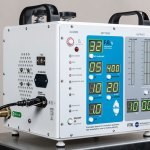
[image error]
The FDA has approved this VITAL ventilator for coronavirus disease patients designed and built by engineers at NASA’s Jet Propulsion Laboratory in Pasadena, California. (Image credit: NASA/JPL-Caltech)A new ventilator developed by NASA to treat victims of the ongoing coronavirus pandemic has received emergency approval from the U.S. Food and Drug Administration (FDA), the space agency said today (April 30).
The NASA ventilator, a high-pressure devise called VITAL, was developed by engineers at the space agency’s Jet Propulsion Laboratory in Pasadena, California in response to the limited supply of traditional ventilators for COVID-19 patients suffering from respiratory distress.
“This FDA authorization is a key milestone in a process that exemplifies the best of what government can do in a time of crisis,” NASA chief Jim Bridenstine said in a statement. “This ventilator is one of countless examples of how taxpayer investments in space exploration — the skills, expertise and knowledge collected over decades of pushing boundaries and achieving firsts for humanity — translate into advancements that improve life on Earth.”
Related:
Coronavirus outbreak: live updates
Full coverage:
The space industry and the new coronavirus
FDA officials approved the VITAL ventilator (the name is short for Ventilator Intervention Technology Accessible Locally) under the administration’s Emergency Use Authorization of March 24. JPL engineers developed the new ventilator in 37 days and tested it April 21 at the Icahn School of Medicine at Mount Sinai in New York.
The ventilator was one of several coronavirus-fighting devices and technologies NASA showed President Donald Trump last week.
“VITAL poses several benefits in the national response to COVID-19,” NASA officials said in the statement. “It can be built faster and maintained more easily than a traditional ventilator, and is composed of far fewer parts, many of which are currently available to potential manufacturers through existing supply chains.”
[image error]
Some of the dozens of engineers involved in creating a ventilator prototype specially targeted to coronavirus disease patients at NASA’s Jet Propulsion Laboratory in Southern California. (Image credit: NASA/JPL-Caltech)The device can also be modified for use in field hospitals, like those in some convention centers and hotels across the country, NASA officials added. The VITAL ventilator is designed to last up to four months and is not a replacement for dedicated hospital ventilators, which can last years.
The California Institute of Technology (Caltech), which manages JPL for NASA, is offering a free license for the VITAL ventilator to commercial medical manufacturers.
“Now that we have a design, we’re working to pass the baton to the medical community, and ultimately patients, as quickly as possible,” Fred Farina, chief innovation and corporate partnerships officer at Caltech, said in the statement. “To that end, we are offering the designs for licensing on a royalty-free basis during the time of the pandemic.”
Email Tariq Malik at tmalik@space.com or follow him @tariqjmalik . Follow us @Spacedotcom , Facebook and Instagram .
Join our Space Forums to keep talking space on the latest missions, night sky and more! And if you have a news tip, correction or comment, let us know at: community@space.com.
The post FDA approves new NASA ventilator for COVID-19 treatment, Tariq Malik, appeared first on NEWDAWN Blog.
Sting headlines virtual ‘Space Songs’ concert by the Smithsonian National Air and Space Museum tonight!, Chelsea Gohd,
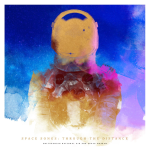
Sting, space and music will collide online tonight (April 30) when the rock icon headlines a free virtual concert “Space Songs: Through the Distance” for the Smithsonian National Air and Space Museum
Tested’s Adam Savage, whom fans will remember from his role on the iconic television series “Mythbusters,” will host the free, virtual concert. Beloved musician Sting, who first made major headlines with the 80s hit-machine “the Police,” will headline the show. He will share the virtual stage with surf rockers, emo heartthrobs and even smaller, independent acts.
The concert will stream live here on YouTube, starting at 8 p.m. EDT (0000 GMT).
Related: Best Space Music Videos Ever: A Rockin’ Chart Countdown
Sting will share the virtual stage with Clipping, Bethany Cosentino from the band Best Coast, Dan Deacon, Ben Gibbard from the band Death Cab for Cutie, Valerie June, Lukas Nelson, Grace Potter, John Roderick and Vagabon.
[image error]
“Space Songs: Through the Distance,” hosted by Tested’s Adam Savage, will feature performances from a number of beloved musicians. (Image credit: Smithsonian National Air and Space Museum)During the concert, musicians will film themselves performing at home as they socially distance along with most of the world to reduce the spread of the novel coronavirus. “Space Songs” is being produced by the museum in collaboration with Grammy award-winning graphic designer and art director Lawrence Azerrad and BYT (Brightest Young Things) media.
This concert will highlight the talent and creativity of these musicians while shining a spotlight on “the creativity and community that can be found in distance and isolation, in both music and spaceflight,” the museum said in a press statement.
“Space exploration is an extraordinary expression of humanity and an illustration of how extreme circumstances can bring out the very best in us all, as individuals and as a community,” Ellen Stofan, the director of the museum, said in the same statement. “Although our locations in Washington and Virginia are temporarily closed, we wanted to continue our mission to engage the public with stories of people doing their very best work, wherever they are on Earth — or off of it.”
So, if you’re a space fan looking to get inspired and jam along to some incredible musicians, be sure to tune in tomorrow night for “Space Songs.”
Visit Space.com Thursday for a live simulcast of “Space Songs” from the Smithsonian National Air and Space Museum.
Follow Chelsea Gohd on Twitter @chelsea_gohd . Follow us on Twitter @Spacedotcom and on Facebook .
Join our Space Forums to keep talking space on the latest missions, night sky and more! And if you have a news tip, correction or comment, let us know at: community@space.com.
The post Sting headlines virtual ‘Space Songs’ concert by the Smithsonian National Air and Space Museum tonight!, Chelsea Gohd, appeared first on NEWDAWN Blog.
‘Mars Horizon’ beta lets you command your own space agency, but act fast, Tariq Malik,

“Mars Horizon,” a space agency simulator game, launched a free beta this week and you can sign up by joining a mailing list here, but you better act fast. The deadline to join ends May 1 at 11 a.m. EDT (1500 GMT/1600 BST).
The new game by Auroch Digital, and published by The Irregular Corporation, puts you in command of your own space program — you can choose NASA, Russia and the European Space Agency — with the goal of dominating space with trips to orbit, the moon and beyond. To do that, you’ll have to research rockets, spacecraft and satellites to achieve your goals, all while tending to your public support, annual budgets and international diplomacy.
Your success depends on how well you balance the risks and reliability of your vehicles, as well as the actions you select during the missions themselves. Do you want to drum up support by stoking fears of UFOs or take the more reasoned approach by saying there’s no alien evidence? (I took the latter.) Should you enter the Space Race with a JFK-esque challenge to go to the moon or not? (Yes, of course!)
Video:
“Mars Horizon” wants you to launch your own space program
Related:
Approachable space program sim Mars Horizon opens beta signups
[image error]
A screenshot from a successful satellite mission in “Mars Horizon” from The Irregular Corporation and Auroch Digital. (Image credit: The Irregular Corporation/Auroch Digital)The “Mars Horizon” beta only covers the first two eras of the space age (with destinations in orbit and at the moon), but the solar system will await in the game’s final form, according to Auroch Digital.
Our friend Fraser Cain at PC Gamer tried out “Mars Horizon” this week and managed to reach orbit with a satellite okay, but his first attempt to put a dog in space didn’t fare as well.
“Mars Horizon” presents itself as more of an agency management game than hyper-realistic simulator like “Kerbal Space Program,” and that may be a bit more accessible for new players like myself. (Full disclosure: My first “Kerbal Space Program” launch was a success, but just barely because my parachute deployed at liftoff.)
There are tantalizing hints at unlocking Russia’s Buran space shuttle, as well as NASA orbiters, before reaching out to Mars and the solar system in the larger game. In my first hour with “Mars Horizon,” I watched my first sounding rocket explode and my first animal launch (in my mind, it carried cats, a dog and one very small hippo) fail in a crushing defeat for hippo-kind. I did manage to get an Earth-studying satellite into orbit and my second animal launch went off without a hitch.
For my first game, I played the European Space Agency (ESA) because the real-life agency actually worked with developers on some aspects of the game. (There’s a physical card game as well, which you can learn about here.)
And just like in real life, the Russians kept beating me to space. They launched the first human in space (very accurate), followed by NASA (again, points for accuracy), leaving me behind largely due to my clumsy early attempts to balance research and spaceport development.
But when Russia sent a cosmonaut around the moon before my first animal launch, well … that one hurt. I’m still ahead of NASA, for now, so I better get cracking on that astronaut moon shot.
The free beta signup period for “Mars Horizon” ends May 1. Details on how to sign up are here.
Email Tariq Malik at tmalik@space.com or follow him @tariqjmalik . Follow us @Spacedotcom , Facebook and Instagram .
Join our Space Forums to keep talking space on the latest missions, night sky and more! And if you have a news tip, correction or comment, let us know at: community@space.com.
The post ‘Mars Horizon’ beta lets you command your own space agency, but act fast, Tariq Malik, appeared first on NEWDAWN Blog.
Our sun is a weirdly ‘quiet’ star — and that’s lucky for all of us, Meghan Bartels,
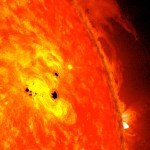
Thank your lucky stars that the sun is pretty weird, as scientists have learned by comparing its activity with that of similar stars.
In new research, astronomers compared the brightness of our sun over time with data gathered on other stars by NASA’s Kepler Space Telescope and by the European Space Agency’s Gaia star-mapping mission. The result is a census of stars about the same size of our sun. But compared to these stars, our sun’s brightness varies significantly less, suggesting that it is calmer than other stars of about the same size.
“We were very surprised that most of the sun-like stars are so much more active than the sun,” Alexander Shapiro, a physicist at the Max Planck Institute for Solar System Research in Germany and a co-author on the new research, said in a statement.
Related: World’s largest solar telescope produces never-before-seen images
Scientists are well acquainted with the sun’s current behavior, of course, and have astronomical observations of dark spots on its surface going back about 400 years. Those sunspots are crucial information about the activity of the sun: They are driven by the sun’s magnetic field and massive outbursts of radiation and matter stem from them.
To understand what the sun was doing before those records begin, scientists can interpret a host of data types, like levels of specific elements in tree rings and ancient ice. With those aids, researchers have constructed estimates of the sun’s activity going back about 9,000 years. The modern sun matches that record pretty well, the researchers said — but that doesn’t mean those 9,000 years are representative of the sun’s 4.6 billion years of existence.
“Compared to the entire lifespan of the sun, 9,000 years is like the blink of an eye,” Timo Reinhold, lead author of the new study and an astrophysicist at the Max Planck Institute for Solar System Research, said in the same statement. “It is conceivable that the sun has been going through a quiet phase for thousands of years and that we therefore have a distorted picture of our star.”
Reinhold and his colleagues wanted to compare the sun’s known activity with what other similar stars are doing. Scientists can’t track sunspots on distant stars directly, but these dark patches on a blazing ball of plasma do affect the brightness of the star. Because all stars rotate, sunspots are carried around the star, causing its brightness to fluctuate — and scientists know very well how to track variations in brightness of a star over time.
[image error]
The brightness variability of our sun compared with that of KIC 7849521, a sun-like star. (Image credit: MPS/hormesdesign.de)That type of data forms the backbone of one of astronomers’ main techniques for discovering exoplanets, and NASA’s Kepler Space Telescope was tailored to measure tiny changes in the brightness of an individual star over time. So the researchers behind the new study went digging in that data.
The astronomers narrowed down a collection of tens of thousands of stars by focusing on those with about the same surface temperature, surface gravity, age and metallicity as our sun. Then, they split these stars into two batches: one containing 369 stars that rotate every 20 to 30 days and one with 2,529 stars that scientists haven’t been able to calculate a rotation period for. (The sun rotates every 24.5 days, but that spin likely wouldn’t be detectable to alien astrophysicists using the same techniques humans have, so both of these groups of stars are important.)
The researchers then analyzed both these groups of stars to understand their activity levels and how they compare with the sun. Stars with known rotation rates were on average much more active than our sun has been over the past 9,000 years — about five times more active. The stars without tracked rotations were less active, much more in line with the sun.
That split poses a puzzle for scientists: Either there’s something fundamentally different between clockable stars and unclockable ones, or something has been making the sun much quieter than stars like it for at least the past 9,000 years.
Right now, there’s no way to tell which is correct. But it’s definitely not a bad thing that our sun is relatively calm: Its outbursts can endanger our technology in orbit and on Earth’s surface, and if it were very, very active, the sun’s temper could threaten life itself. Fortunately, there’s no sign the sun will get rowdy soon, and scientists have predicted that the upcoming 11-year solar cycle should be reasonably tame.
The research is described in a paper published May 1 in the journal Science.
Email Meghan Bartels at mbartels@space.com or follow her @meghanbartels. Follow us on Twitter @Spacedotcom and on Facebook.
The post Our sun is a weirdly ‘quiet’ star — and that’s lucky for all of us, Meghan Bartels, appeared first on NEWDAWN Blog.
April 27, 2020
Star Wars: The Rise of Skywalker will hit Disney Plus on May 4 – CNET

Long have we waited. The full Skywalker Saga will be available on Disney Plus on Monday, May 4, when Star Wars: The Rise of Skywalker will hit the streaming service.
The ninth movie in the main Star Wars saga came to theaters last December and made more than $1 billion in less than a month, despite its mixed critical reception. It became available for digital purchase and came out on Blu-ray (with usual slew of behind-the-scenes extras) in March.
Disney Plus certainly is aiming to create disturbance in the Force for May the 4th (which has been dubbed Star Wars Day on social media) — Disney Gallery: The Mandalorian, a documentary series revealing how the live action show was made, will premiere on the service that day, as will the final episode of CGI animated series The Clone Wars.
You might also notice some aesthetic tweaks to the Star Wars section of Disney Plus — each movie and show’s artbook will be updated to feature its original concept paintings, by artists like Ralph McQuarrie and Doug Chiang.
With The Rise of Skywalker’s addition to Disney Plus, only one Star Wars movie will be absent from the service in the US — Solo is currently exclusive to Netflix in the region, but is available on Disney Plus in Europe. It’ll hit Disney Plus in the US in July.
Read more: Best live TV streaming for cord-cutters: YouTube TV, Sling TV, Hulu and more

All the Star Wars movies, from the cheesy to the great, ranked
25 Photos

Now playing:
Watch this:
What’s new to stream for April 2020
4:31
The post Star Wars: The Rise of Skywalker will hit Disney Plus on May 4 – CNET appeared first on NEWDAWN Blog.
Apple Watch uncovered my toxic stress level, and helped me fix it – CNET

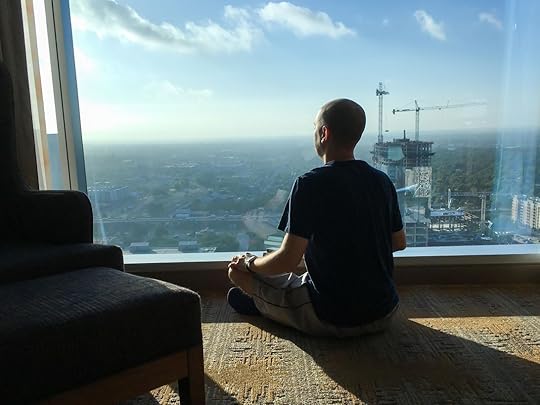 The Apple Watch’s built-in Breathe app is an excellent way to begin a meditation routine.
The Apple Watch’s built-in Breathe app is an excellent way to begin a meditation routine.Jason Hiner/CNET
When I started using the SleepWatch app on the Apple Watch a year ago, I intended to mostly compare it to other sleep tracking products I had tried. But it led to a series of events that helped me not only quantify my sleep better than other sleep tech, but also identified a bigger issue: my unhealthy level of stress. Combined with a couple other apps on the Apple Watch, I was able to improve my stress and track my progress by following Heart Rate Variability.
It all kicked off last May when I started testing the SleepWatch app and a couple other sleep tracking apps on the Apple Watch. Part of my motivation was that reports had begun circulating that Apple was working on adding built-in sleep tracking to the Apple Watch. So I wanted to see if the Apple Watch actually had strong enough battery life to handle sleep tracking, if I minded wearing my watch while I slept, how accurate its tracking could be, and what kinds of data it could provide.
After testing the free versions of several sleep tracking apps. I gravitated to SleepWatch because it felt like the most polished, most detailed and the one that was most like a feature Apple would design.
Since CES 2018, I had been testing a number of different sleep technologies since sleep was one of the hottest new categories at the show that year. I also knew that of the three pillars of health — nutrition, exercise and sleep — sleep was the one where I needed the most help. I already had discipline and a good routine for exercise and nutrition, and tech played an important part in that.
Read more: Apple Watch saved my life: 5 people share their stories
I had been an early adopter of Fitbit in 2010 and switched to the Apple Watch to track activity when it launched in 2015. I had also been using apps like LoseIt to track my meals and daily nutrition for nearly as long.
By early 2018, the tech industry had woken up to the fact that sleep was one of the next frontiers where technology could help improve lives. The CES Sleep Tech pavilion had all kinds of tech products aimed at helping people sleep, from special glasses to high-tech sleep masks to smart air filters to smart pillows to speakers for creating a sound blanket.
The first product that I tried out for tracking sleep was EarlySense Live, when I was working on a story about how their under-the-mattress sensor was being used to monitor patients in hospitals as well as kids with asthma. It worked pretty well. It seemed to track my sleep correctly about 80% of the time and the app was pretty simple.
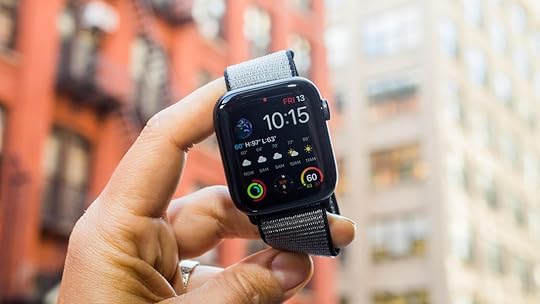 The Apple Watch continues to add more health features over time.
The Apple Watch continues to add more health features over time.Sarah Tew/CNET
A couple months after CES, I also got a Sleep Number 360 Smart Bed. It had some features that made it a terrific bed, like the ability to adjust mattress firmness and tilt so that my wife and I could each customize for our side of the bed. But the sleep tracking features weren’t great. I only found them to be accurate about 50% of the time and the data visualizations weren’t nearly as detailed as EarlySense. Several times a week the SleepNumber would miss tracking times when I slept, or would erroneously pick up extra sleeping hours when my wife rolled slightly to my side or the bed or the cat hopped onto the bed after I got up.
All in the all, the best thing about SleepNumber’s tracking was that you didn’t have to wear anything, add anything or do anything extra. The best thing about EarlySense was its detailed data visualizations that showed quality of sleep, such as Deep Sleep, Light Sleep and REM Sleep.
When I started using SleepWatch, I quickly found it to be far more accurate than either SleepNumber or EarlySense. In my personal usage, it tracked correctly about 95% of the time. Since the Apple Watch was on the body and directly tapped into heart rate, that appeared to make it much more accurate.
Read more: We look back at five years of the Apple Watch
I didn’t mind wearing the watch to sleep in as much as I thought I would, mostly because the Sport Band straps on the Apple Watch were pretty comfortable and so it wasn’t distracting or uncomfortable. The Apple Watch battery life also exceeded my expectations. I found that if I charged it for two to three hours a day — when I was in the shower, reading at night before bed or while I was a meeting during the day — that was enough to get a full day’s charge.
All of that gave me the confidence to track my sleep every night and to trust the data I was getting back. So I set a goal of averaging at least seven hours of sleep per night. That made it like a game — like getting 10,000 steps a day or closing the Activity rings on the Apple Watch. And within a few months I was able to change my habits and routines so that I went from averaging five to six hours of sleep per night to at least seven.
Once I had improved the overall amount of sleep I was getting, I started to dig into the other metrics that SleepWatch was tracking to understand the quality of my sleep. While SleepWatch didn’t track REM sleep like EarlySense, it did add a number of other indicators that went into daily SleepWatch score. These included Total Restful Sleep Time, Sleeping Heart Rate Dip, 7-Day Sleep Rhythm, Sleep Disruption Percentage and Average Sleeping HRV.
 The SleepWatch app showing very low HRV.
The SleepWatch app showing very low HRV.Screenshot by Jason Hiner/CNET
When you look at each of these, you can click into them and see how your 30-day average compares with other SleepWatch users. Once I got my sleep up to an average of seven hours per night, all of my numbers were in the top 70th to 90th percentile — except for one, Average Sleeping HRV. And that one was really bad, in the lower 25th percentile (meaning 75% of SleepWatch users were scoring better than I was).
To be honest, I didn’t even know what HRV was. The SleepWatch app itself had a little bit of information built into the app. So, I read that, “Heart rate variability (HRV) is not the same as heart rate. HRV is a relatively new and growing area of health research. HRV may reveal information about your well-being that heart rate can’t.” It also said, “Health research suggests that higher levels of heart rate variability during sleep are associated with more youthful physiology, better sleep quality, and less mental stress.”
The app included a few tips to improve HRV: consume less alcohol (I don’t drink), adopt a regular long-term exercise routine (I was already doing that) and practice mindfulness activities before sleep.
While I regularly practiced prayer and meditation, I tended to do most of it in the early mornings. So I started researching more about HRV, along with how mindfulness, meditation and deep breathing could improve HRV. I learned that the Apple Watch had just started tracking HRV with WatchOS 4 in 2018.
I also learned that HRV essentially takes the pulse of your nervous system. Another way to think about it is that it’s measuring the impact that stress is having on your overall health and well-being — something that’s normally hard to quantify since lots of adults internalize things rather than acting out.
The Average Sleeping HRV reading in my SleepWatch data was saying that I had a potentially toxic amount of stress in my life and I needed to do a better job of managing it.
I started listening to the audiobook Breathing: The Master Key to Self Healing by Dr. Andrew Weil and started trying out a bunch of meditation apps. I eventually began using Dr. Weil’s 4-7-8 deep breathing technique before sleep and I settled on Simple Habit as my favorite meditation app. I liked that one because it was the most focused on reducing stress and improving sleep. It also had the most free content so I was able to use it for a couple months before giving my credit card to opt for the subscription.
 The HRV Tracker app lets you see the full day and show progress over time.
The HRV Tracker app lets you see the full day and show progress over time.Screenshot by Jason Hiner/CNET
Basically, I started taking meditation, breathing and mindfulness as serious as my workout regimen. Gradually, my overnight HRV numbers started to improve in the SleepWatch app. But since I was focused on improving my HRV, I also wanted to track it a little more closely and not just while I was sleeping, so I also downloaded the HRV Tracker app. Sure enough, I started noticing that when I had a stressful conflict, confrontation or setback, my HRV reading would often bottom out.
But the Apple Watch doesn’t track HRV constantly, and I wanted a better way to take the pulse of my HRV manually. I learned that the Breathe app built into the Apple Watch automatically triggers an HRV reading, so I started using that to get my HRV at different times when I was meditating or breathing during the day.
It didn’t take long for me to realize that the Breathe app itself is actually a great tool for meditation, deep breathing and mindfulness — especially when you slow down the “Breath Rate” in the Apple Watch settings to four breaths per minute. Now, I keep tabs on my daily numbers with HRV Tracker — and not just my sleeping HRV. I regularly use the Breathe app for two-minute sessions throughout the day and I’ve mixed it in with my other deep breathing exercises and the short meditations I do from the Simple Habit app.
Read more: 9 native Apple Watch apps you should be using
With that, I’ve been able to increase my daily HRV averages from the mid-20s to the low-50s. That’s still not outstanding, but it’s much more normal and it continues to improve. The whole process has also trained me to understand my body better. I now realize when certain signals in my body — that I would have previously ignored — are sending up red flags to tell me I need to take moment to breath a little and reorient my thoughts. It’s been a solid quality-of-life upgrade.

Now playing:
Watch this:
The Apple Watch has been life changing for these four…
10:59
The post Apple Watch uncovered my toxic stress level, and helped me fix it – CNET appeared first on NEWDAWN Blog.
Popular Google Doodle games are making a coronavirus comeback – CNET
 Some of Google’s popular Doodle games are making a comeback, including 2017’s Coding for Carrots.
Some of Google’s popular Doodle games are making a comeback, including 2017’s Coding for Carrots.Need something new to play while bored and stuck at home? Google’s bringing back some of its most popular Google Doodle games to help.
For the next two weeks, the search giant will be featuring some of the most popular logo games on its eponymous homepage. Monday’s kickoff Doodle is 2017’s Coding for Carrots game, in which you complete steps to guide a rabbit to a carrot.
Google has slots for nine additional games listed as “coming soon” but it remains to be seen if classics such as Pac-Man, the Rubik’s Cube or the free-throw contest will make returns during this run.
“As COVID-19 continues to impact communities around the world, people and families everywhere are spending more time at home,” the company said in a statement on its Google Doodles website. “In light of this, we’re launching a throwback Doodle series looking back at some of our popular interactive Google Doodle games!”
Other games, like 2017’s Cricket, can be played at Google’s Doodle website.
Read more: Best free games right now for Xbox, Stadia, PlayStation, PCs and Nintendo Switch

Why 2020 could be the best year for video games
40 Photos
The post Popular Google Doodle games are making a coronavirus comeback – CNET appeared first on NEWDAWN Blog.
Nissan Ariya electric SUV likely leaked in patent images – CNET

 Enlarge ImageIt was a handsome concept and should look good as a production car, too.
Enlarge ImageIt was a handsome concept and should look good as a production car, too.Nissan
Boy, we’ve seen a lot of leaks surrounding Nissan recently. First it was patent images of the next Rogue, then it was legitimate photos of the Rogue from digital Nissan marketing material, and now it looks like the firm’s next electric car is the subject of a new leak.
That’d be the production Nissan Ariya concept, which showed up in patent images over the weekend. The Instagram account car_secrets posted the photos on Sunday, and for what it’s worth, it’s the same account that leaked the purported Rogue photos. Judging by the photos, the production Ariya will be a near spitting image of the concept we saw at the 2019 Tokyo Motor Show.
View this post on Instagram
Nothing seems totally redone in these images, save for some expected tweaks for a production car. It seems like there are new light accents in the front bumper, the lower part of the grille features some elements akin to production, rather than the show car, and the side profile reveals the flap for a charging point on the driver’s side. Caps for parking sensors and a tow hook also appear in these patent photos, lending credibility to the fact these pictures provide a good look at the production car.
Nissan’s particularly proud of the front grille, which will translate to production. The automaker previously said this piece will house the Ariya’s array of driver-assist features in a discreet manner. It even came up with a nifty name for the piece: the Tech Shield. The design and engineering feat isn’t totally new, but it’s starting to become more widespread and trickle down from luxury cars to more affordable vehicles.
Nissan didn’t immediately return a request for comment on these images, but don’t expect the company to speak about a future vehicle — let alone a big vehicle launch for the brand. This will be the automaker’s second electric car after years of learnings from the Leaf hatchback. We’ll likely see the electric SUV debut late this year or sometime next year.

Now playing:
Watch this:
Nissan Ariya concept is the shape of things to come
2:03
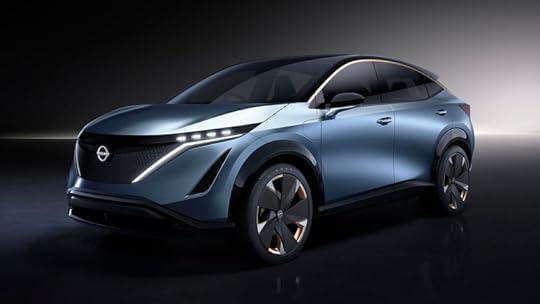
Nissan Ariya is a long-range electric SUV concept with a real future
73 Photos
[image error]
More From Roadshow

2020 Nissan Rogue review: Aging gracefully

2020 Nissan Sentra review: Super commuter

2020 Nissan Titan XD first drive: Extra medium
The post Nissan Ariya electric SUV likely leaked in patent images – CNET appeared first on NEWDAWN Blog.



